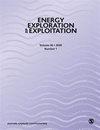将 LSTM 网络与梯度提升机 (GBM) 相结合,评估建筑节能中的供热和制冷负荷要求
IF 1.6
4区 工程技术
Q4 ENERGY & FUELS
引用次数: 0
摘要
由于对节能建筑的需求不断增加,需要先进的预测模型来评估供热和制冷负荷要求。本研究提出了一种融合 LSTM 网络和 GBM 的统一策略,以提高建筑物能源负荷估算的精确度和可靠性。收集和准备有关能源使用、天气条件、占用趋势和建筑特征的数据,以启动该过程。使用序列关系创建 GBM 模型属性,并使用 LSTM 网络进行初始负荷预测。将 LSTM 与 GBM 结合使用,可以发挥每个模型的优势:LSTM 的顺序数据处理和 GBM 的复杂非线性连接捕捉。RMSE 和 MAE 等性能指标用于评估混合模型的有效性。与单个模型相比,LSTM-GBM 集成方法提高了预测精度。这种更高的预测能力可用于实时能源管理系统,改善楼宇运行并减少能源使用。在楼宇管理系统(BMS)中实施这一集成模型表明,它在实现可持续楼宇能源效率方面非常实用。本文章由计算机程序翻译,如有差异,请以英文原文为准。
Integration of LSTM networks with gradient boosting machines (GBM) for assessing heating and cooling load requirements in building energy efficiency
Due to rising demand for energy-efficient buildings, advanced predictive models are needed to evaluate heating and cooling load requirements. This research presents a unified strategy that blends LSTM networks and GBM to improve building energy load estimates’ precision and reliability. Data on energy usage, weather conditions, occupancy trends, and building features is collected and prepared to start the process. GBM model attributes are created using sequential relationships and initial load projections using LSTM networks. Combining LSTM with GBM takes advantage of each model's strengths: LSTM's sequential data processing and GBM's complex nonlinear connection capture. Performance measures like RMSE and MAE are used to evaluate the hybrid model's validity. Compared to individual models, the integrated LSTM-GBM method improves prediction accuracy. This higher predictive capacity allows real-time energy management systems, improving building operations and reducing energy use. Implementing this integrated model in Building Management Systems (BMS) shows its practicality in achieving sustainable building energy efficiency.
求助全文
通过发布文献求助,成功后即可免费获取论文全文。
去求助
来源期刊

Energy Exploration & Exploitation
工程技术-能源与燃料
CiteScore
5.40
自引率
3.70%
发文量
78
审稿时长
3.9 months
期刊介绍:
Energy Exploration & Exploitation is a peer-reviewed, open access journal that provides up-to-date, informative reviews and original articles on important issues in the exploration, exploitation, use and economics of the world’s energy resources.
 求助内容:
求助内容: 应助结果提醒方式:
应助结果提醒方式:


